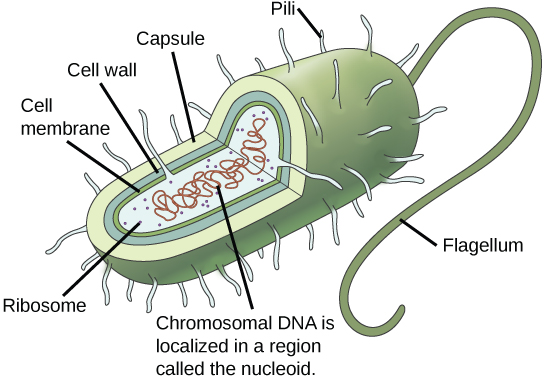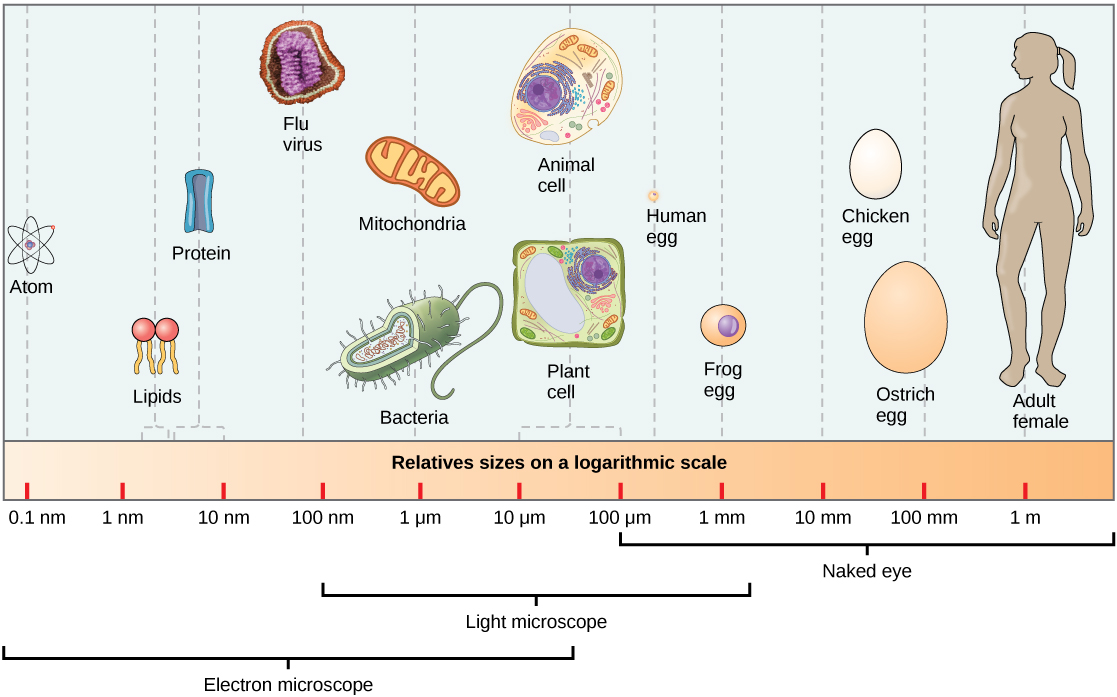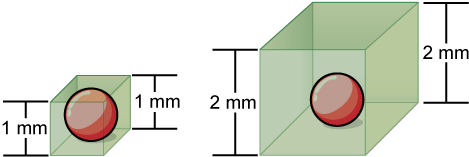| << Chapter < Page | Chapter >> Page > |
With the identification and characterization of the urkingdoms we are for the first time beginning to see the overall phylogenetic structure of the living world. It is not structured in a bipartite way along the lines of the organizationally dissimilar prokaryote and eukaryote. Rather, it is (at least) tripartite, comprising (i) the typical bacteria, (ii) the line of descent manifested in eukaryotic cytoplasms, and (iii) a little explored grouping, represented so far only by methanogenic bacteria.Cal Woese and George Fox, "Phylogenetic structure of the prokaryotic domain: the primary kingdoms", Proceedings of the National Academy of Science, USA . 1977 74(11):5088-90.
Cells fall into one of two broad categories: prokaryotic and eukaryotic. Until the publication of the paper cited above, it was believed that the prokaryotic cells were all members of the group we know as Bacteria. Woese and Fox (and others) laid out a strong case for another class of prokaryotic cells, which they christened the Archaea. Cells of animals, plants, fungi, and protists are all eukaryotes (eu- = “true”, karyo = "nucleus") and are made up of eukaryotic cells. The single-celled organisms of the domains Bacteria and Archaea are prokaryotes (pro- = “before”). We will consider these two domains here, since they have some similarities, but it is good to remember that Bacteria and Archea are as different from each other as they are different from the Eukaryotes.
All cells share four common components: 1) a plasma membrane, an outer covering that separates the cell’s interior from its surrounding environment; 2) cytoplasm, consisting of a jelly-like cytosol within the cell in which other cellular components are found; 3) DNA, the genetic material of the cell; and 4) ribosomes, which synthesize proteins. However, prokaryotes differ from eukaryotic cells in several ways.
A prokaryote is a simple, mostly single-celled (unicellular) organism that lacks a nucleus, or any other membrane-bound organelle. We will shortly come to see that this is significantly different in eukaryotes. Prokaryotic DNA is found in a central part of the cell: the nucleoid ( [link] ).

Most prokaryotes have a peptidoglycan cell wall and many have a polysaccharide capsule ( [link] ). The cell wall acts as an extra layer of protection, helps the cell maintain its shape, and prevents dehydration. The capsule enables the cell to attach to surfaces in its environment. Some prokaryotes have flagella, pili, or fimbriae. Flagella are used for locomotion. Pili are used to exchange genetic material during a type of reproduction called conjugation. Fimbriae are used by bacteria to attach to a host cell.
However, not all microbes (also called microorganisms) cause disease; most are actually beneficial. You have microbes in your gut that make vitamin K. Other microorganisms are used to ferment beer and wine.
Microbiologists are scientists who study microbes. Microbiologists can pursue a number of careers. Not only do they work in the food industry, they are also employed in the veterinary and medical fields. They can work in the pharmaceutical sector, serving key roles in research and development by identifying new sources of antibiotics that could be used to treat bacterial infections.
Environmental microbiologists may look for new ways to use specially selected or genetically engineered microbes for the removal of pollutants from soil or groundwater, as well as hazardous elements from contaminated sites. These uses of microbes are called bioremediation technologies. Microbiologists can also work in the field of bioinformatics, providing specialized knowledge and insight for the design, development, and specificity of computer models of, for example, bacterial epidemics.
At 0.1 to 5.0 μm in diameter, prokaryotic cells are significantly smaller than eukaryotic cells, which have diameters ranging from 10 to 100 μm ( [link] ). The small size of prokaryotes allows ions and organic molecules that enter them to quickly diffuse to other parts of the cell. Similarly, any wastes produced within a prokaryotic cell can quickly diffuse out. This is not the case in eukaryotic cells, which have developed different structural adaptations to enhance intracellular transport.

Small size, in general, is necessary for all cells, whether prokaryotic or eukaryotic. Let’s examine why that is so. First, we’ll consider the area and volume of a typical cell. Not all cells are spherical in shape, but most tend to approximate a sphere. You may remember from your high school geometry course that the formula for the surface area of a sphere is 4πr 2 , while the formula for its volume is 4πr 3 /3. Thus, as the radius of a cell increases, its surface area increases as the square of its radius, but its volume increases as the cube of its radius (much more rapidly). Therefore, as a cell increases in size, its surface area-to-volume ratio decreases. This same principle would apply if the cell had the shape of a cube ( [link] ). If the cell grows too large, the plasma membrane will not have sufficient surface area to support the rate of diffusion required for the increased volume. In other words, as a cell grows, it becomes less efficient. One way to become more efficient is to divide; another way is to develop organelles that perform specific tasks. These adaptations lead to the development of more sophisticated cells called eukaryotic cells.


Notification Switch
Would you like to follow the 'Principles of biology' conversation and receive update notifications?